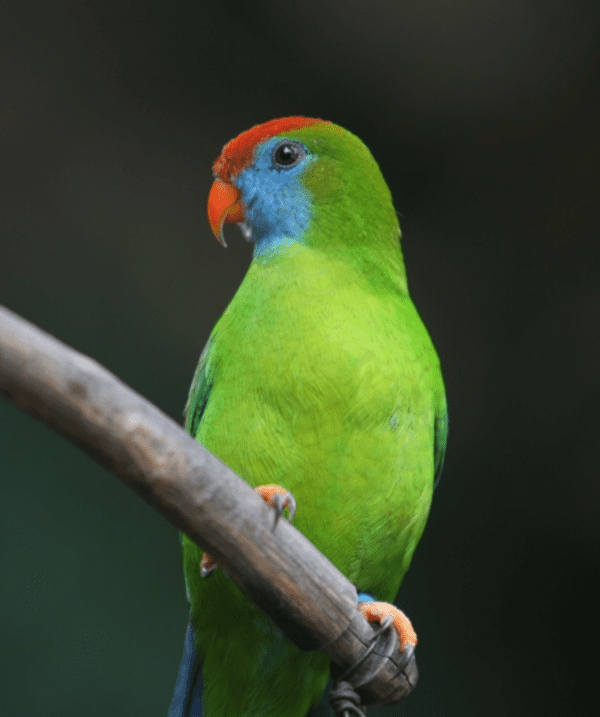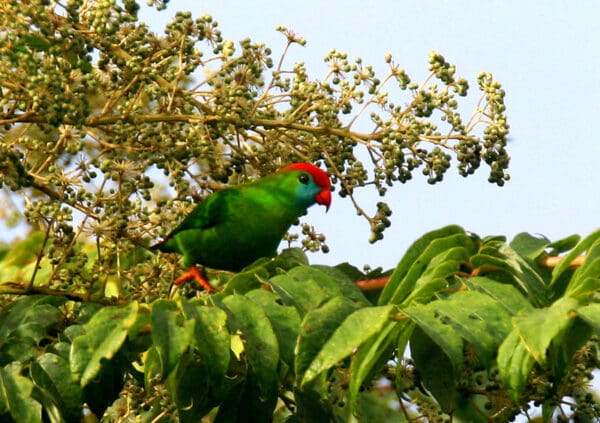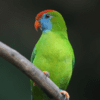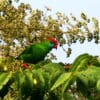Camiguin Hanging Parrot
Also known as:
Camiguin Colasisi
Also known as:
Camiguin Colasisi

Loriculus

camiguinensis
Size:
14 cm (5.5 in)
Weight:
About 35 g.
Subspecies including nominate:
one
Colour Adult:
Adults: Yellowish-green body, with red forehead and crown, red rump, some red on upper wing-coverts with diffusely duskier centres, primary feathers green; secondary and tertial feathers dusky green. Light blue face and blue underside of tail. Eye dark greyish; beak orange to orange-red; legs yellowish-horn to fleshy-orange. Distinguished from congeners by longer tail and wing, more strongly blue-washed face.
Colour Juvenile:
As in adults but has little or no red on top of head and reduced blue on cheek.
Call:
A high-pitched, rapidly repeated “tziit-tziit-tziit”.
More Information:
Content Sources:
Captive Status:
Trapped for local market.
Longevity:
—
Housing:
—
Diet:
—
Enrichment:
—
Nest Box Size:
—
Clutch Size:
Not recorded.
Fledging Age:
—
Hatch Weight:
—
Peak Weight:
—
Weaning Weight:
—
World Population:
Unknown, likely declining.
IUCN Red List Status:
Not Evaluated
CITES Listing:
Appendix II
As conspecific with L. philippensis.
Threat Summary:
Restricted-range species; is found in Mindanao and the Eastern Visayas Endemic Bird Area. Is apparently rare on the island; its conservation status appears to be highly precarious. Trapping for the local cagebird market is a significant threat.
Range:
Camiguin Sur, off N coast of Mindanao, in S Philippines.
Habitat:
Canopy in upland forest.
Wild Diet:
Feeds on nectar, seeds, particularly of wild bananas (Musa sp), also soft fruit, berries and blossoms.
Ecology and Behaviour:
Is likely sedentary. Seen singly, in pairs or in small groups of birds.
Clutch and Egg Size:
Not recorded.
Breeding Season:
Likely September–November. Nest is tunnel or cavity in dead tree-fern.



